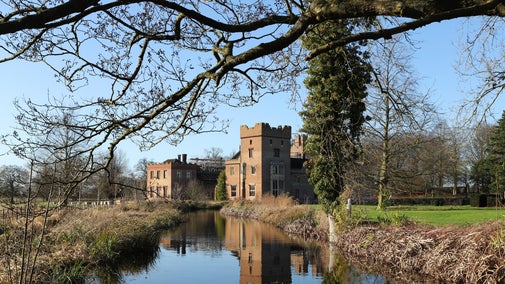
Donate
Everyone needs nature, now more than ever. Donate today and you could help people and nature to thrive at the places we care for.

Find out how and why we have had to tackle the issue of larch trees in Lynches Wood which were planted over half a century ago. The reasons for felling many of them include the prevention of a contagious tree disease and also too little light reaching the woodland floor due to trees growing too close together.
Planted by the National Trust over 50 years ago as a crop to feed the timber industry, the European larch trees in Lynches Wood were reaching maturity in 2018 and ready to be harvested.
Specialist contractors felled many of the larch trees. The works were all part of the management of the woods and completed the cycle of why the larch were originally planted.
The larch harvest helps us to manage the spread of the deadly fungal disease, Phytophthora ramorum.
Large swathes of larch have been infected by the disease in the west of England. Larch trees are particularly susceptible but the disease can also be deadly to oak, sweet chestnut and beech.
The removal of the larch helps to stop the disease from spreading.

- Martin Jones, Area Ranger
The trees in Lynches Wood were growing too closely together. This wasn't good for their development. After careful planning, we've cut some down, leaving the ones that remain to mature properly.
Where the trees are too dense, too little light reaches the ground, leaving the wood dark and uninviting. Competition for light and resources makes the trees tall and spindly.
By removing some of the weaker, less healthy trees it gives those left the space to grow and allows light back into the wood, creating opportunities for plants like bluebells to grow.
The removal of the mature larch also provides us with an opportunity to replant the wood with native broadleaved trees like oak and sweet chestnut.
The young trees will restore the character of Lynches Wood and create a much more natural age structure.
As part of the Dover’s Hill landscape, there is a public footpath that runs through Lynches Wood from the Cotswold Way to Weston-sub-Edge. You can use the permitted routes to do a circular walk around the wood. From the car park, across the open access land to Lynches Wood, around the wood and back to the car park is approximately 3km/1hr.
With your ongoing support, we're able to continue our vital conservation work. Thank you for helping to protect these special places.

Everyone needs nature, now more than ever. Donate today and you could help people and nature to thrive at the places we care for.
Take in the expansive views from the top of Dover's Hill, spot birds and see ancient remains, all within the Cotswold Area of Outstanding Natural Beauty.

We believe that nature, beauty and history are for everyone. That’s why we’re supporting wildlife, protecting historic sites and more. Find out about our work.

Read about our strategy, which focuses on restoring nature, ending unequal access and inspiring more people.
